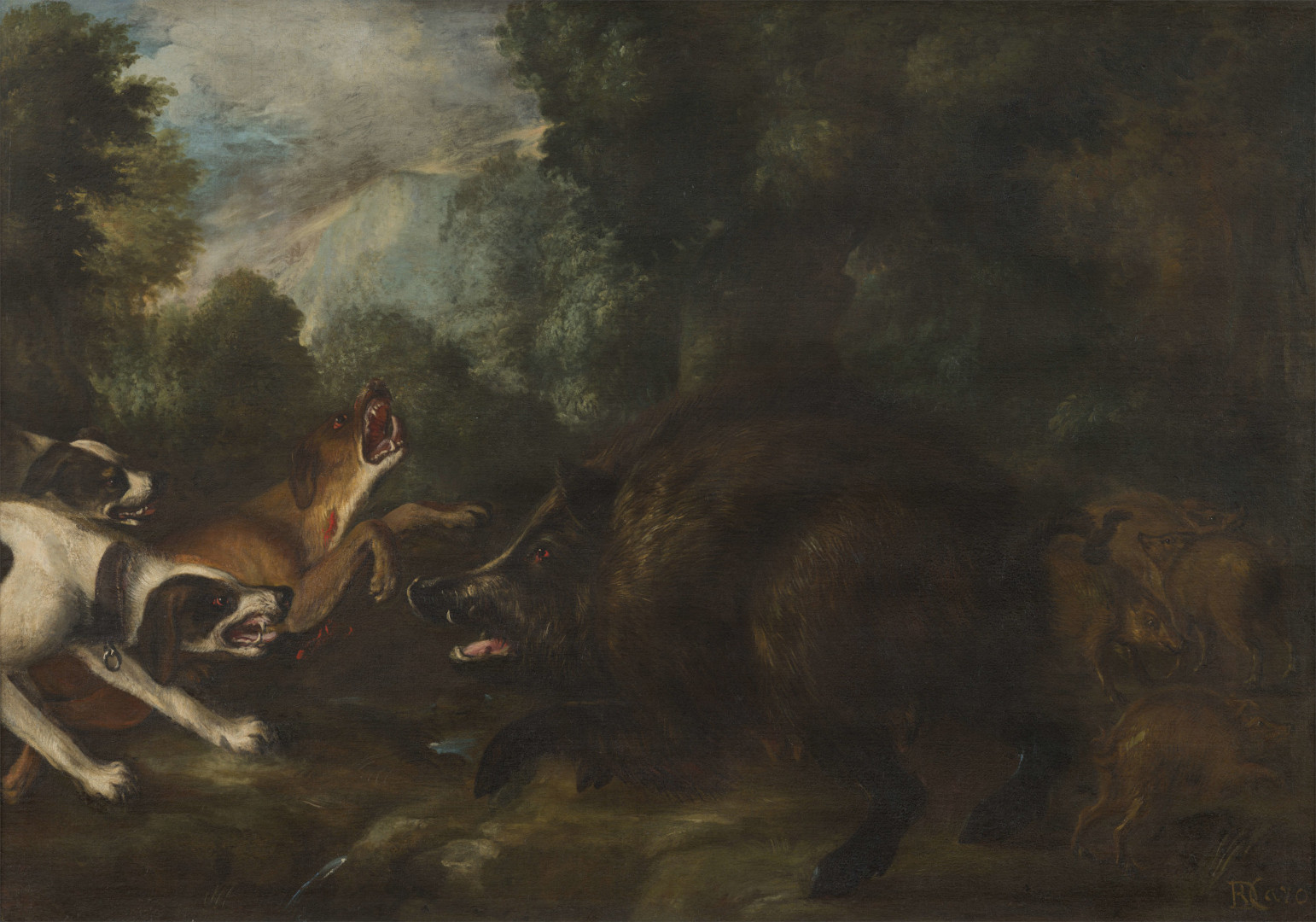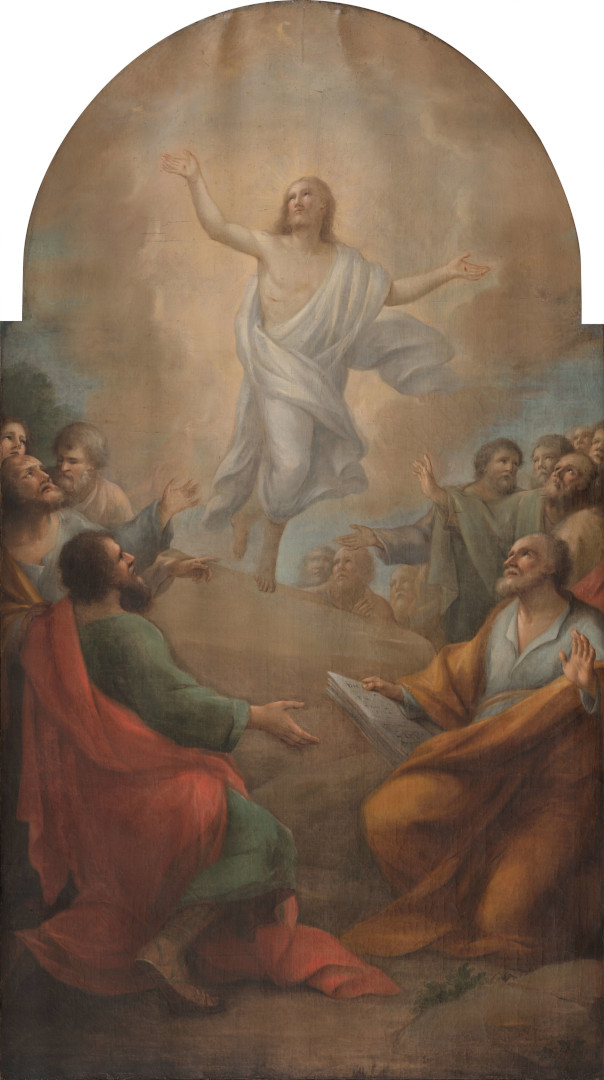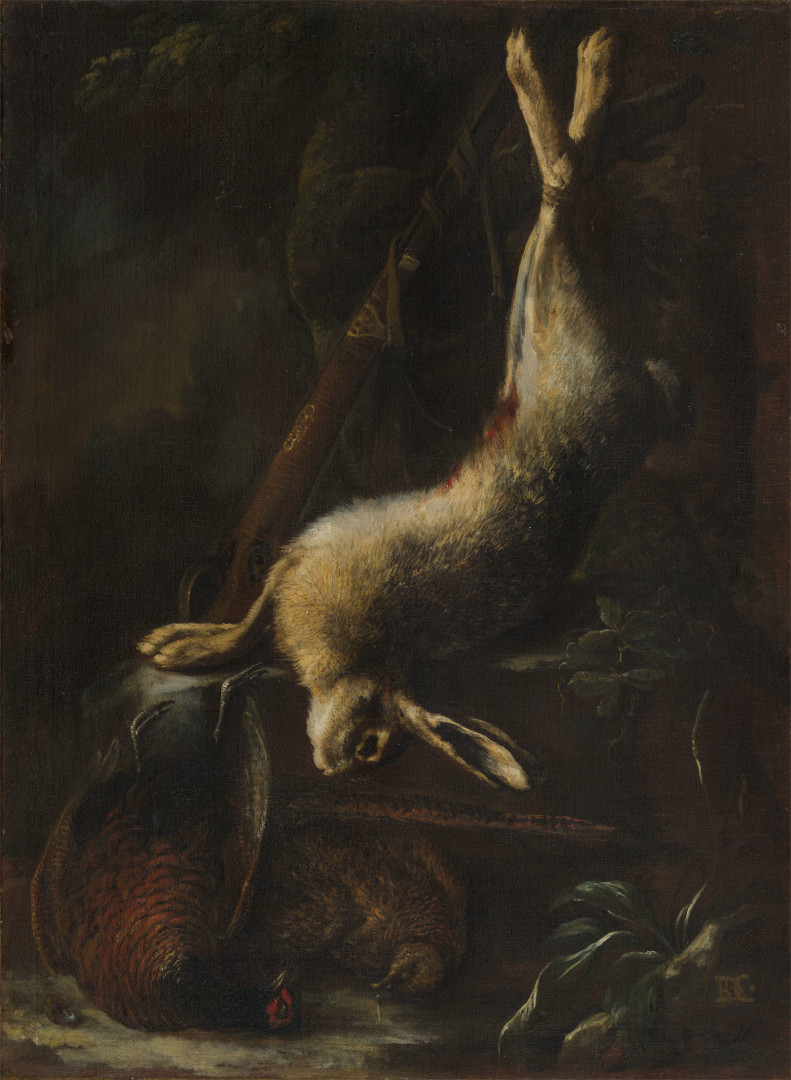Usiamo i cookie in questa webapp.
Alcuni di loro sono necessari per il corretto funzionamento del sito.

The work Wild boar hunting is, in all probability, part of the original nucleus of the Carditello Picture Gallery. It belongs to a series of large paintings of wild boar, deer, and hare hunting, present at the Royal Site of Carditello in 1792, and used to furnish the Royal Palace of “Ficuzza” during the exile in Palermo (1799 - 1815). The series probably never returned to Naples and in 1817 was replaced with the five paintings by Pieter Mulier known as “il Tempesta” (the Storm).
<
The altarpiece Ascension of the Saviour with the twelve apostles was made for the Chapel of the Royal Site of Carditello, dedicated to the Ascension of Jesus Christ, officially inaugurated by Ferdinand IV of Bourbon in 1792, and in use until 1936.
This is the only surviving canvas of the three that originally adorned the room, decorated by the Tuscan brothers Angelo and Carlo Brunelli. The work is dated 1788, but was only

Game with dead hare is among the paintings chosen by Hackert to furnish the Royal Palace of Carditello as early as 1792. In particular, the work was intended for the Game Room, inventoried in the heritage of the Royal Palace of Caserta only in the post-war period.
Signed by Baldassarre De Caro, this still life can certainly be dated to the first half of the 18th century, echoing numerous European examples of the genre, including those foun

The painting has long been believed to be a representation of Bourbon nativity scenes: in it, two cows, two sheep and a dark-coated goat act as the protagonists of a simple, idealised landscape.
It is known that the canvas came to Carditello after the Restoration, to replace some still lifes exhibited in 1792 and never relocated.
The work is signed by Giacomo Nani, an artist specialised in kitchen interiors and the leading representative in Carditello of a pleasan

The painting Cucumbers and head of lettuce is a pendant to the painting of ham and figs, with which it shares the story.
Thanks to The gallant Cook, recipe book by chef Vincenzo Corrado, it is known that cucumbers lent themselves to a variety of uses in 18th-century cooking: they were served marinated, fried, boiled in meat sauce or pickled; used as a side dish for meat and fish.
It is reported that lettuces were often eaten raw, as a salad, i.e.